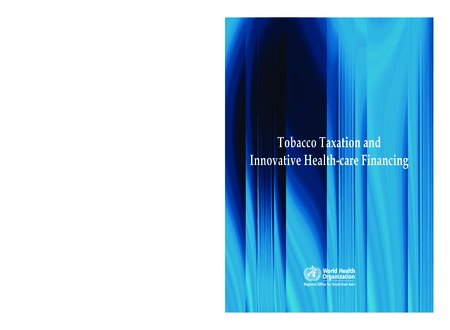Hello! You're looking at a policy document report on Overton
We track government policy, guidelines, think tank research, working papers and more to help our customers see the impact and influence of their work. Are you interested in seeing what information we have to offer? Request a free trial to our platform.
If you fund, produce or manage research or work to influence policy, we'd love to talk. Learn more on our homepage.

Identifiers
Overton ID
who-80561413d6c601d17e7ce8abdc99e891
Tobacco taxation and innovative health-care financing
World Health Organization, Regional Office for South-East Asia
Topics in this document
Excise
Tobacco smoking
Value-added tax
Hypothecated tax
Ad valorem tax
World Health Organization
Cigarette
Beedi
Economy
Human activities
Health
Public sphere
Tax
Innovative financing
Victorian Health Promotion Foundation
Tariff
Health promotion
Government
Poverty
Preventive healthcare
Externality
Non-communicable disease
Related SDGs
SDG 3: Good Health and Well-being ...
SDG 3: Good Health and Well-being
Target 3.a
Strengthen the implementation of the World Health Organization Framework Convention on Tobacco Control in all countries, as appropriate
Cites research funded by
Citations
Cited by 16
other policy documents
(14 of them are from other policy sources)
